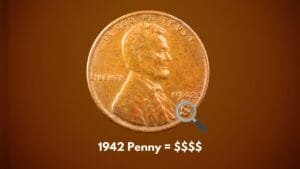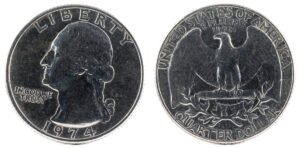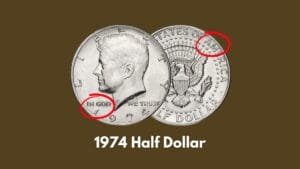Recently I visited a local thrift store, where I stumbled upon an old sofa priced at about $30,000. The couch sure looked old, with carvings & dark finishes. But then I looked at the base, and there were screws and gum! Yes, it was a new, forged piece, a scam!
Now scams like this aren’t unknown to antique sofas. Crafty makers copy the antique designs, achieving an ‘old’ distressed look in no time. So to identify a REAL antique sofa, you must dig into their marks & brands. And we’ll discuss all of it here!
Key Takeaways
- You can identify your antique sofa by its dovetail joints, tufted backs, wooden frames, and etched brand marks.
- There are about 16 types of antique sofas, the most precious of which are the Chesterfield, Chaise Lounge, Mid-Century Modern, and barrel-back ones.
- Antique sofas with Hardwood, Softwood, or Cast Iron sections cost more due to their brushed, handmade finishes.
- Bored with the typical Bare Wood or Metal sofas? Pick hand-painted Black, Brown, Red, or Silver sofas for more value.
Key Features of Real Antique Sofas

With an untrained eye, even a new, dusty sofa in your shed might look old. So don’t miss out on these aged features to ensure if it’s really antique or not:
- Simple dove-tail joinery, hand-carved details, and interlocking pieces
- Natural materials – Hardwood, Leather, Horsehair & Cotton
- Aged furniture leg styles – Ball & Claw, Bobbin, or Cabriole
- Hand-tied springs & Wooden dowel arms
- Tufted or Buttoned backs with Silk, Velvet, or Brocade upholstery
Brief History of Antique Sofas
Did you know that the Egyptians made the first sofa roughly 4000 years from now? Crude and hand joint, this was more like a planked bench with a backrest. Even the Egyptians called it ‘Suffah’ (bench) for the same reason.
Later, it arrived in Rome & Europe. But Europeans didn’t find it soft & proportioned. So, by the 1600s, they worked on carved frames, each with leather or velvet upholsteries. But such designer sofas had only one pattern and back!
By the 1800s, makers focused on many designs like Rococo & Victorian. Some even used tufted buttons, arched backs, and carved handles, hiking their costs. But then there was a severe recession by the 1940s, and people moved to cheaper furniture. And the antique sofas became a past glory!
16 Antique Sofas Styles With Features & Values
Since the sofas came into existence, they have undergone countless changes. Makers tweaked the back’s design over the years, giving us the following 16 types:
| Sr no. | Antique Sofa Styles | Unique & Collectible Features | Year | Estimated Cost |
| 1. | Chesterfield Sofa | Burly, button-back sofas with deep tufting, rolled arms, leather-clad backs, and studded trims | 1800s | $1500 – 19,000 |
| 2. | Camelback Sofa | Arch-back sofas with small bumps in the center, scrolled arms, and tapered legs | 1700s | $500 – 4000 |
| 3. | Divan Sofa | Low-profile sofas with Velvet or Brocade upholstery, curved backs, and narrow sections | 1700s | $100 – 1200 |
| 4. | Chaise Lounge | Look for long, narrow seats with extended legs, sloping backs, and one-arm designs | 1750s | $500 – 13,000 |
| 5. | Tuxedo Settee | Low-profile sofas with same-height back & arms, hand-tied springs & upholsteries | 1900s | $500 – 3500 |
| 6. | Lawson Couch | Separate back cushions, lower arms, straight backs, and tweed or leather upholsteries | 1900s | $1000 – 6000 |
| 7. | Mid-century Modern Sofas | Look for sleek, minimal designs with peg legs and leather or wool upholsteries | 1940s | $2,000 – 29,000 |
| 8. | Tight back Sofas | Straight & high-back sofas with pulled upholsteries & carved frames with fixed cushions | 1800s | $400 – 3000 |
| 9. | Wingback Sofas | Wide sofas with winged, extended-back sofas that encase the sitter | 1700s | $600 – 5500 |
| 10. | Barrel-back Sofas | Tub-like sofas with curved or rounded backs around the sitter | 1920s | $700 – 8000 |
| 11. | Knole Sofas | High backs, Loose cushions, Adjustable angle arms, grid-like upholstery tufts & decorative finials | 1700s | $500 – 3000 |
| 12. | Slipper Couch | Low-profile, armless sofas with curved backs, hand-tied springs & Mahogany or Oak frames | 1750s | $300 – 5000 |
| 13. | Bustle Sofa | Curved or Serpentine-shaped sofas with a slight bump at the back & Victorian, Edwardian, or Art Nouveau motifs | 1900s | $900 – 4500 |
| 14. | Louis XV Sofas | Look for curved, feminine sofas with Cabriole legs, ornamented frames & Rococo motifs | 1800s | $800 – 9000 |
| 15. | English Club Sofas | Simple, 2-seat sofas with pleated, rolled arms, turned legs, and block color upholsteries | 1770s | $2000 – 12,000 |
| 16. | Boudeuse Couches | Small, curved sofas with a central, horizontal backrest, coil-like springs, and Edwardian or Victorian designs | 1800s | $400 – 1500 |
6 Steps to Identify and Value Antique Sofas (With Prices)
Now, let’s see how different factors like age, materials & colors help you identify your antique sofa:
1. Trace the Sofa’s Manufacturing Date & Age

You can identify an OLD & AUTHENTIC sofa by its crude edges, uneven thickness, and solid wood finishes. Also, look for dovetail or dowel joints as in the old 1700s models. Besides, check for any maker’s date stamp or label under the bottom frame.
But if the label’s faded or torn, spot these aging clues to verify:
| Antique Sofa Years | Age | How to Identify? | Average Value |
| 1600s | 324 – 423 years | Dramatic, curved & asymmetrical sofas with crude dowel, tenon-mortise joints, and velvet upholsteries | $5000 – 40,000 |
| 1700s | 273 – 323 years | Curved, symmetrical, and balanced designs with high wingbacks, gilded elements, and velvet or brocade upholsteries | $2000 – 26,000 |
| 1750s | 223 – 273 years | Solid wood – Oak or Walnut sofas with detailed Chinese motifs, plain or arched backs, linear sections, and carved elements | $1000 – 18,000 |
| 1800s | 173 – 223 years | Classical, Greek, or Roman designer sofas with tufted arms and brocade or velvet upholsteries | $900 – 12,000 |
| 1850s | 123 – 173 years | Industrial, machine-polished sofas with glued joints, arched backs, minimal carvings, and solid Oak designs | $400 – 7000 |
| 1900s | 50 – 123 years | Curved or Organic furniture, each with floral or light-colored inlays, minimal designs, and silk or cotton upholsteries | $300 – 5000 |
2. Check the Frame Materials
Just like other antiques, the earliest 1600s sofa had hardwood – oak, walnut, or mahogany frames. But then, in the 1800s, makers moved towards metal & steel. And by the 1900s, they even used plastic, Rattan & Wicker, too!
So let’s see how to spot & appraise such aged sofa materials:
| Old Sofa Materials | Collectible Features | Estimated Cost |
| Hardwood – Walnut, Mahogany, Oak & Walnut | Yellowish or Chocolate brown sofas with straight, pop-like grain & British or American motifs | $800 – 23,000 |
| Softwood – Pine, Cedar & Fir | White, Beige, or Yellowish couches with rustic or provincial motifs & knotted wood designs | $600 – 18,000 |
| Rattan & Wicker | Lightweight knotted or woven furniture with organic, natural, or tropical designs | $300 – 2000 |
| Metal Sofas | Superior Iron, Bronze, Brass, and Steel sections with Scrolls, Curves, Flowers & Geometric designs | $500 – 12,000 |
| Plastic | Light & molded sofas with simple geometric-circle or Triangle forms, pop art stickers, and linear sections | $300 – 2000 |
Pick antique sofas with crude Shellac, Varnish, Wax, or Lacquer finishes for an old make.
3. Check the Upholstery Materials

It’s not just the frame materials; even an old sofa’s upholstery affects its age and value. It’s so that the old 1800s sofas had leather, velvet, or horsehair upholsteries. But, by the 1900s, makers used silk and linen too!
Below are some clues to identify & value such fabrics:
| Antique Sofa Upholstery Materials | Average Value |
| Silk (Damask & Taffeta) | $1500 – 19,000 |
| Velvet & Brocade | $800 – 15,000 |
| Leather & Horsehair | $900 – 20,000 |
| Wool (Woven & Tapestry) | $300 – 8000 |
| Linen (Casual & Provincial) | $300 – 5000 |
| Cotton | $200 – 3500 |
Try to get antique sofas with Floral, Geometric, Marbled, or Patchwork patterns for better designs.
4. Find the Manufacturer

One of the easiest ways to identify your vintage sofa is by its brand! So, just get a magnifying glass and check for any stamped or etched maker marks on the following spots:
- Back of the couch – Wooden frame or Metal plate
- Tags or Stickers at the seat’s bottom
- Etched marks on the furniture arms, or legs
- Sewn logos on the cushions or pillows
Found it? Great! Now go on, and confirm the brand’s name, features, and costs below:
| Antique Sofa Brands | Years | Unique & Special Features | Estimated Cost |
| Duncan Phyfe | 1800 – 1850s | Federal-style sofas with refined designs, lyre-shaped motifs & reeded legs | $900 – 6500 |
| Ercol | 1950s | Solid Oak sofas with slant legs, straight backs, flutes, and a stamped logo at the base | $1000 – 5000 |
| G-Plan Couches | 1960 | Handcrafted, 3-seater sofas with reclining footrests, Art Nouveau or Art Deco designs & foam cushions | $500 – 2000 |
| Nathan | 1934 | Simple 2-seater sofas with Wood frames, leather upholsteries, and Fiber-filled cushions | $2000 – 10,000 |
| Jentique | 1950s | Scandinavian or Art-deco style sofas with Solid Oak sections, varnishes, and geometric designs | $1000 – 5000 |
Branded sofas with original ‘Made in USA’ or ‘Made in Europe’ stamps cost more than others.
5. Observe the Colors

You won’t obviously get new-age galvanized or multicolored finishes with old sofas. But you can still look for matte black, brown, and white finishes to identify the 1600s models. And if you want the colored ones, go for the 1700s brushed red and blue sofas!
| Vintage Sofa Colors | Average Cost |
| Black, Brown & White | $1000 – 20,000 |
| Beige & Gray | $600 – 8000 |
| Blue, Green & Purple | $400 – 15,000 |
| Metallic Silver & Gold | $1000 – 18,000 |
| Red, Yellow & Orange | $600 – 15,000 |
6. Examine the Handle Styles

The arm style is another visual clue to identifying old sofas! Antique sofas have seven arm styles, each with a different shape and value. Of these, the curled English or Chippendale ones are old, often from the 1700s, while the boxy, Tuxedo ones are newer.
Here’s how to identify & value an old sofa based on its arm styles:
| Vintage Sofa Arm Styles | Top Features | Estimated Value |
| English or Chippendale Rolled Arms | Rounded, outward-turned, low-profile arm with classic English designs | $600 – 19,000 |
| Tuxedo Arms | Rectangular & Boxy, upholstered arms with same height sections | $400 – 2000 |
| Saddle Armrests | Round, wide, and gently sloped armrests with an inward curve | $900 – 7000 |
| Track Arms | Straight and boxy arms with straight, polished edges | $1200 – 9000 |
| French & Provincial Arms | Scrolled or Curved arms with countryside carvings | $2000 – 15,000 |
Can You Polish Antique Sofas?
Ideally, you shouldn’t polish your antique sofas as it might damage the original finishes and devalue your couch. Instead, apply a thin layer of ‘Paste wax’ to save the wood from natural wear and tear.
How Do You Clean Old Sofas Naturally?
Prepare a simple 0.25:1 solution of vinegar & oil, and rub it horizontally along the wood grain. Now, wipe the sofa with a clean cloth and water, and air dry it for 4 – 5 hours.
Now that you have my guide, I’m sure you can identify any antique sofa like a pro! Just check for any marks, brand names, logos, edges, & armrests, and you’re done! And you can use the same rule for identifying old furniture, like Windsor chairs, old rocking chairs & school desks.
Note: This article is intended for informational, educational, and entertainment purposes only. Some images are illustrative and may not represent actual brands, products, or related entities. All trademarks, product names, brand logos, packaging, and other intellectual property referenced remain the exclusive property of their respective owners. Any brand mentions or references are provided solely for descriptive and educational context and do not imply any formal or commercial association.










